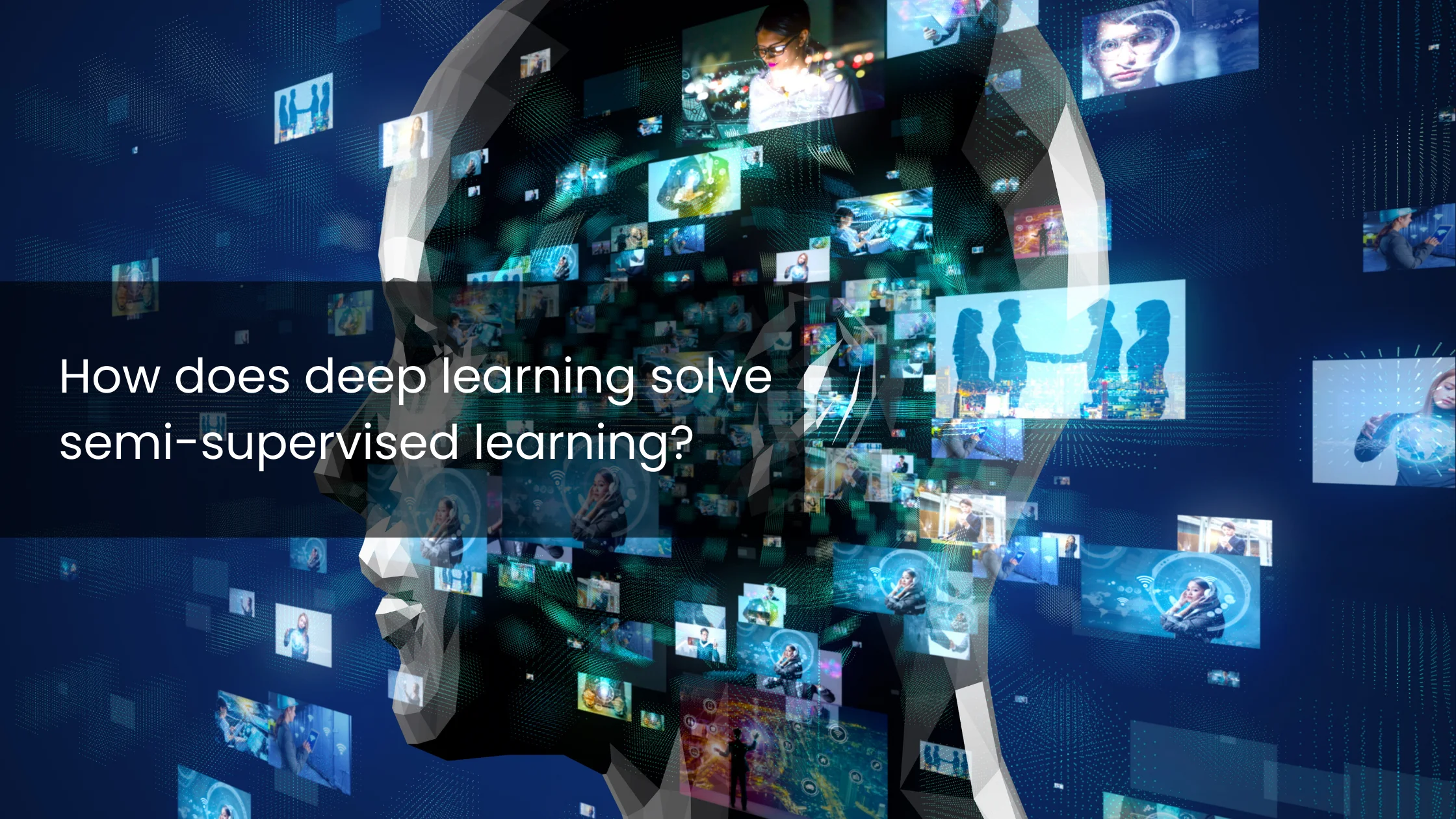 Imagine a world where your machine learning model can learn from both labelled and unlabeled data, kind of like a student who aces their exams by studying both textbooks and class notes. Sounds magical, right? Welcome to the realm of semi-supervised learning, where deep learning plays the role of the magic wand. In this blog, we'll dive into how deep learning addresses the challenges of semi-supervised learning and why it's a game-changer for data enthusiasts.
Imagine a world where your machine learning model can learn from both labelled and unlabeled data, kind of like a student who aces their exams by studying both textbooks and class notes. Sounds magical, right? Welcome to the realm of semi-supervised learning, where deep learning plays the role of the magic wand. In this blog, we'll dive into how deep learning addresses the challenges of semi-supervised learning and why it's a game-changer for data enthusiasts.
Understanding Semi-Supervised Learning
Semi-supervised learning sits comfortably between supervised learning (where all data is labelled) and unsupervised learning (where no data is labelled). Think of it as the best of both worlds. You have a small set of labelled data and a larger pool of unlabeled data. The trick is to leverage the unlabeled data to improve the model's performance. Sounds simple, but how does deep learning fit into this?
The Deep Learning Magic
Deep learning, with its intricate neural networks, has an impressive ability to learn and generalize from data. Here's how it works its magic in semi-supervised learning:
Feature Extraction: Deep learning models can automatically extract features from raw data. This means they can identify patterns and representations that are useful for making predictions. For instance, in image recognition, a neural network might learn to identify edges and shapes even if the images are unlabeled.
Consistency Regularization: This technique ensures that the model’s predictions are consistent across different versions of the same data. For example, if an image is slightly rotated or its brightness is adjusted, the model should still make the same prediction. This helps in making the most out of unlabeled data by treating it in various ways and ensuring the model learns robust features.
Generative Models: These models, like GANs (Generative Adversarial Networks) and VAEs (Variational Autoencoders), generate new data points. They learn the distribution of the data and can create synthetic samples that are similar to the original dataset. This is particularly useful when you have limited labeled data.
Pseudo-Labeling: The model assigns labels to the unlabeled data based on its predictions. These pseudo-labels are then used as if they were true labels in the training process. Over time, as the model improves, the quality of the pseudo-labels increases, creating a positive feedback loop.
Why It Matters
So why should you care about this semi-supervised learning wizardry? Because in the real world, labelled data is often scarce and expensive to obtain. By using deep learning to make the most of both labelled and unlabeled data, you can build more accurate and robust models without breaking the bank.
Ready to Dive Deeper?
If you're fascinated by the potential of semi-supervised learning and want to explore further, check out our comprehensive courses on Machine Learning and Data Science with Python and the Advanced Data Science and Machine Learning Masterclass. Dive into hands-on projects and master the techniques that make deep learning so powerful.
For those looking to specialize further, our Deep Learning, NLP, and Generative AI course offers an in-depth exploration of the technologies driving the future of AI.
Perfect! Below is the FAQ section in your requested format (using <h2> and <h4> tags only), tailored for your blog titled “How Does Deep Learning Solve Semi-Supervised Learning?”:
Frequently Asked Questions
What is semi-supervised learning in simple terms?
It’s a method that combines a small amount of labeled data with a large amount of unlabeled data to train machine learning models more effectively.
How does deep learning enhance semi-supervised learning?
Deep learning applies techniques like feature extraction, consistency regularization, generative models (like GANs), and pseudo-labeling to maximize learning from limited labeled data.
What are the benefits of using semi-supervised learning?
It reduces labeling costs, boosts model performance with minimal supervision, and is ideal for real-world problems where labeled data is scarce.
What is pseudo-labeling in deep learning?
Pseudo-labeling involves letting the model assign labels to unlabeled data and then using those “pseudo” labels as training input to improve itself iteratively.
Where can I learn deep learning techniques for semi-supervised learning?
You can start with the Machine Learning and Data Science with Python course and then advance to Deep Learning, NLP, and Generative AI at Cinute Digital.
Conclusion
Deep learning is a powerhouse in the world of semi-supervised learning, turning the challenge of limited labelled data into an opportunity for innovation. By extracting meaningful features, ensuring prediction consistency, generating new data, and cleverly labelling the unlabeled, deep learning models can achieve remarkable results.
So, the next time you're facing a mountain of unlabeled data, remember that with deep learning, you've got a magic wand at your disposal. Start exploring, and experimenting, and let the power of semi-supervised learning transform your data science projects.